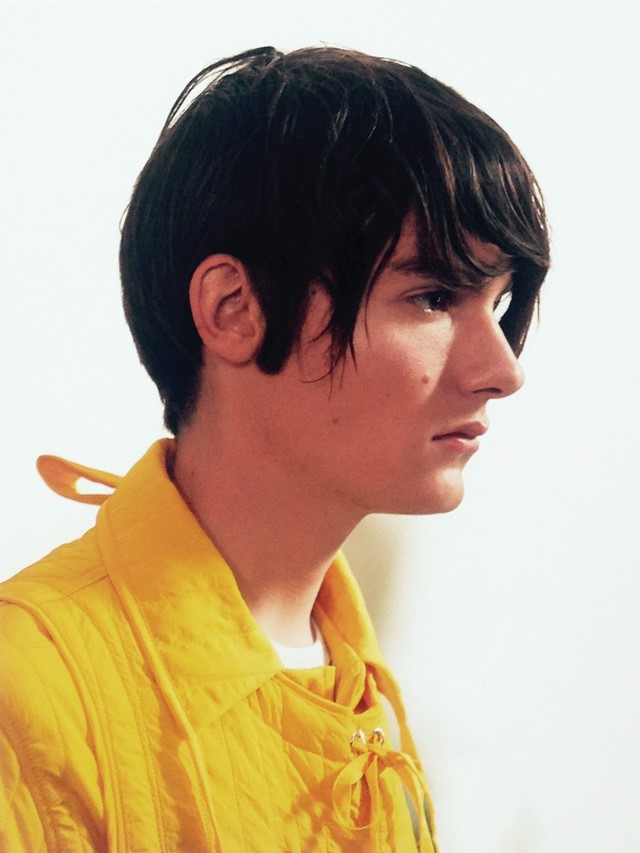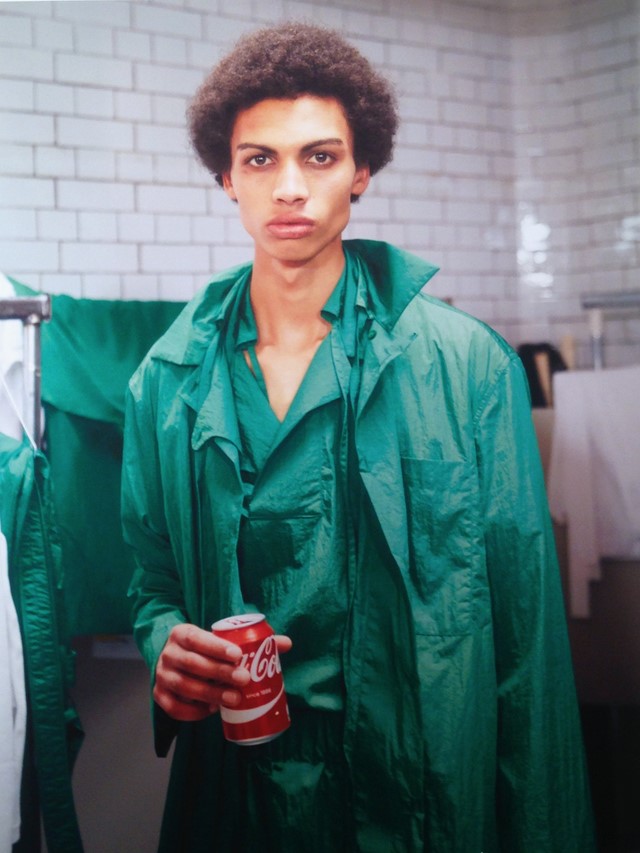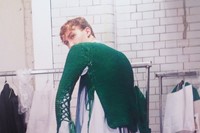In light of the recent criticisms of his S/S16 collection, Susanna Lau asks: if it ain't broke, why fix it?
Nobody was wiping tears from their eyes after Craig Green’s S/S16 show, now widely regarded as the hot ticket of LC:M. Instead, there were malcontented murmurings; many of the silhouettes supposedly bore much similarity to Green’s S/S15 show that really did have people reduced to tears. “You might be compelled to wonder if it’s a little too soon for Green to be dipping into his own back pages for inspiration?” wrote Tim Blanks in his review for style.com. Where was the emotional floodgate for us fashion journalists to dig our writing teeth into this season? It became armchair – or front row – critiquing at its worse.
Being a young designer today is hard enough. Being a young designer with Green’s immense talent is even harder, as he shoulders the weight of responsibility to deliver earth shatteringly emotive and forward thinking collections every season whilse simultaneously managing a growing business and a burgeoning network of stockists. Let’s have some perspective on a designer who is on the cusp of going the distance with longevity, and appreciate what it takes to get to where he is.
Consistency = Commerce
You volte-face in ideas from one season to the next and you get accused of being inconsistent. You re-introduce design aspects that would otherwise be called a "signature style" and you get called repetitive. It can feel like a lose-lose situation where a designer is concerned. In Green’s case, why fix something that ain’t broken? Yes, we saw a return of the quilted jackets and trousers that evoke judo suits, much lauded in his S/S15 collection, and strings flailing about as if the zen-imbued ensembles might fly away with face-obscuring wooden sculptures weighing them down. The most notable difference was the brightly hued colour palette introduced to lighten the mood.
"When it’s a DNA as good as the one Green has built up, capitalising on its quality is smart business"

As Max Richter’s reworking of Vivaldi’s Spring concerto struck up, so did an uplifting parade of sky blue, neon orange, grass green and lemon yellow. The colours of primary school toys introduced a sense of fun, which felt decidedly new. That evidently wasn’t enough for the naysayers. If there was a balance between consistency and change, Green struck it wisely. When facing the demands of stockists in a tough retail environment, a young designer needs to be allowed the space to grow slowly and that means bedding in a design DNA of sorts. And when it’s a DNA as good as the one Green has built up, capitalising on its quality is smart business.
New, New, New
London is a place where we celebrate the new in fashion; that’s how Green rose to such dizzying heights in the first place, but our short-term and fickle memories can hamper our ability to see beyond the new and the bold. We seem to forget that Green has only been showing three seasons on his own as part of LC:M, before that nurtured under the MAN scheme and yet he is considered something of an ‘established’ designer and the onus on him to deliver thus becomes ever greater. Does there need to be a change of culture in the industry, where instead of rashly propping up the new for the sake of newness we should learn to appreciate the people that will stand the test of time?
"Our short-term and fickle memories can hamper our ability to see beyond the new and the bold"
That timelessness can be seen at the Met Museum’s headlining China: Through the Looking Glass exhibition, where Green’s S/S15 collection stands majestically among an impressive installation of perspex bamboo poles. Green is a designer who has the ability to conjure up many a tear-jerking moments in his career in the future. Will we allow him the time to achieve them?

New Gender
For all the talk of repetition, there was newness: Green had women walk his show, all the better to model those Mean Girls-inspired twisted nipple taut t-shirts and hole-ridden sweaters with chutes of fabric flowing from them. The fact that women have been freely wearing Craig Green’s clothes has been an unexpected boon for the designer, and a female presence in the show was less about announcing a separate womenswear line but more a gesture to honour those customers. In any case, Green’s clothes have an innate spirituality and fluidity about them that means gender can seem irrelevant. And further down the line, when Green is good and ready, womenswear will surely beckon.
"Green’s clothes have an innate spirituality and fluidity about them that means gender can seem irrelevant"

This feature is part of a fashion week series brought to you courtesy of Dazed Digital and AnOthermag.com.












